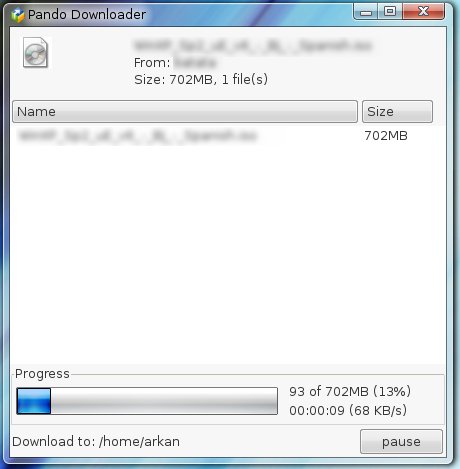
Bajenlo para Ubuntu Hardy desde aqui
Pagina de descargas
Para los que no estén muy al tanto, el servidor gráfico es el encargado del propio interfaz al que estamos acostumbrados, el paradigma de escritorio con sus ventanas, control por teclado, ratón, etc.
Hasta ahora, algunos aspectos había que configurarlos mediante la edición de un fichero de configuración, el famoso xorg.conf que hemos visto en varios manuales. Es el encargado de controlar el monitor, periféricos, resoluciones, tarjeta de vídeo, etc.
En ocasiones a algunos se les presentaba un inconveniente por ejemplo para asignar una resolución más alta de la que le ofrecía inicialmente Ubuntu. A algunos se les arreglaba simplemente instalando los drivers propietarios. Otros sin embargo tenían que editar a mano el fichero de texto para indicar la resolución deseada.
Otra opción era el uso del conocido y potente comando “[sudo] dpkg-reconfigure xserver-xorg” que abría un asistente en modo texto para configurar todos estos detalles. No es mala opción, pero para los novatos puede ser algo engorroso y podrían no entender lo que tenían delante.
Pues bien, como introducía en Gutsy se incorporará un interfaz gráfico para configurar gran parte de estos detalles. Aunque aún están en desarrollo ya han mostrado un par de capturas.
En esta primera podemos ver cómo configurar el driver gráfico adecuado. Podemos elegirlo mediante el nombre del propio driver, y para los que lo desconozcan -más fácilmente- eligiendo la marca y modelo de la gráfica.

En la segunda podemos comprobar cómo se puede configurar también el monitor: el modelo, resolución, refresco y orientación. Comentan además que en este momento hay soporte para configurar dos monitores, como vimos en este tutorial, pero que con Xorg 7.3 será factible configurar más, en caso de tenerlos.

En principio se está desarrollando específicamente para Ubuntu, aunque es muy probable que otras distribuciones lo adopten también. Sin duda una grata noticia que muchos aplaudirán.

 Linspire, developer of the Linspire commercial and Freespire community desktop Linux distributions, and CNR.com, a free Linux software delivery service, announced on August 8 the immediate availability of the controversial Freespire 2.0 distribution -- the Linux distribution that embraces proprietary software.
Linspire, developer of the Linspire commercial and Freespire community desktop Linux distributions, and CNR.com, a free Linux software delivery service, announced on August 8 the immediate availability of the controversial Freespire 2.0 distribution -- the Linux distribution that embraces proprietary software.digg this story |



If you're one of those Windows users who are less than enchanted by what you've seen of Vista and you're thinking about switching, you face some tough choices that can make you feel like a pioneer. Is it a good idea to move to a Mac, with its easy interface, high level of safety and stability -- and higher prices? Or is it better to adopt a Linux distro, which is free (or, at least, inexpensive), supported by a range of imaginative developers -- and not quite newbie-friendly? Either decision forces you into new, unfamiliar territory.
For answers, we went to two writers who have a great deal of experience with Windows PCs but have recently experimented with moving to either a Mac or Linux. Mitch Wagner is an executive editor here at InformationWeek who has become an enthusiastic Mac convert, while Serdar Yegulalp, who has written extensively about Microsoft Windows, is now exploring the world of Linux and Linux distros. In other words, while both like to tout the advantages of their newly chosen operating systems, they are also well aware of the drawbacks.
In the following pages, they lead a guided tour of the two OSes, paying particular attention to eight important areas: Installation & Migration; Hardware Support & Power Management; Networking, Web & Wireless; Productivity; Entertainment; Security; Working With Windows (because we couldn't completely ignore Microsoft); and Stability, Backup & Disaster Recovery.
Which is the better OS? Only you can decide --but you'll make a more informed decision after you've taken this tour, and you'll discover you have some companions on your journey.
El articulo completo esta en la siguiente pagina:
1° de agosto
http://informationweek.com/news/showArticle.jhtml?articleID=201002048 As expected, Warren Woodford of MEPIS Linux has announced that the next version of SimplyMEPIS 6.9.51 will be based on Debian Linux instead of Ubuntu.
As expected, Warren Woodford of MEPIS Linux has announced that the next version of SimplyMEPIS 6.9.51 will be based on Debian Linux instead of Ubuntu.